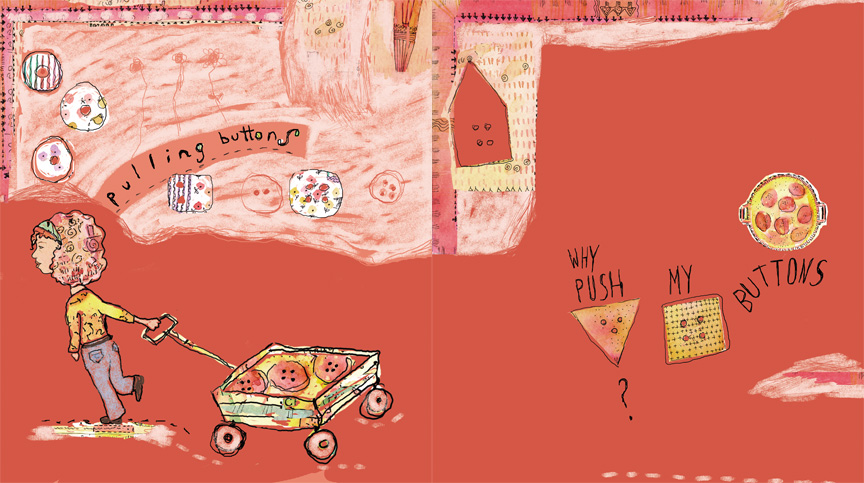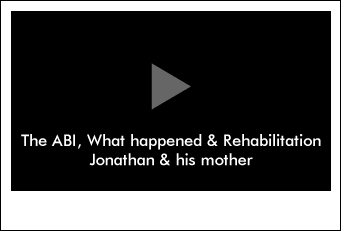- SELF STUDY MODULES
- 1. Intro to TBI
- 2. Communication
- 3. Skills for independence
- 4. Cognitive changes
- 5. Behaviour changes
- 6. Sexuality
- 7. Case management (BIR)
- 8. No longer available
- 9. Mobility & motor control
- 10. Mental health & TBI:
an introduction - 11. Mental health problems
and TBI: diagnosis
& management - 12. Working with Families
after Traumatic Injury:
An Introduction - 13. Goal setting
- 12.0 Aims
- 12.0A Take the PRE-Test
- 12.1 Why is working with families important
- 12.2 What is the adjustment experience for families
- a) The journey
- b) The challenges
- 12.3 Principles and skills
- a) Partnering
- b) Whole of family
- c) Family reactions
- d) Respect
- e) Empowering
- 12.4 When to get help
- 12.5 Take home messages
- 12.6 Resources
- 12.7 Take the POST-Test
12.3c Principles and skills: Family reactions
- i)
Principle:
Understanding
family reactions - ii)
Responses
to family
reactions Q - iii)
General
principles
- iv)
Cheryl:
Carers:
Video - v)
Cheryl:
Equipment
Video - vi)
S.O.L.E.R.
- vii)
Specific
strategies Q

Principle: Understanding family reactions
Families can experience many different types of reactions when their relative has sustained an injury, and when they openly display these reactions it can be difficult for staff.
Three common types of reactions are:
(i) Confused and fearful:
Earlier we viewed the DVD of Angela, and considered some of the key adjustment challenges she faced. Like many family members she was confused and fearful in the early stages of Steven’s time of rehabilitation, and wondered what the future held.
(ii) Distressed and/or crying:
Some family members will go through periods in which they will experience distress – distress may also be expressed through tears.
(iii) Anger:
Understanding some of the fears family members may be experiencing will mean we are less likely to personalise aggressive or angry responses.
Responding to common scenarios
Read through each of the three case studies and answer: How would you manage the situation?
Briefly describe how would you manage this situation?
- Listen to their concerns – what are they most worried about?
- Provide reassurance
- Normalise their feelings
- Provide information – verbal or written – leave contact details
- Check understanding of person with injury
- Provide opportunities to ask questions
- Establish clear limits on the information that different staff members can provide (medical, psychology, nursing, SW, physio, occupational therapy)
Briefly describe how would you manage this situation?
- Consider whether you speak privately with the family member or in presence of the client
- Acknowledge change and progress
- Check if family member expectations are too high
- Gently suggest SW or psychology services
- Emphasise things that family can still do together
Briefly describe how would you manage this situation?
- Acknowledge what family member is upset about
- Try and understand why they are upset
- Discuss the situation
- Don’t reason or argue
- Try to listen – don’t get angry
- Be calm
- Explain staff member role and be clear
- Let Social Worker know
- Advise family member to contact manager if they wish to discuss situation further
Managing Family Reactions General Principles
Be open and non–defensive
Sometimes working with people in distress can come at the worst possible time. You are in the middle of a therapy session, you need to collect some information or you are simply asking someone how they are going. Because of this, it is often hard to manage people in distress.
- Take a deep breath and put your own needs aside
- Be mindful of your body language and frame of mind
- Use S.O.L.E.R.
Listen and be empathic
- Be genuine and listen to the feelings being expressed
- Concentrate and focus attention
- Don’t interrupt
- Don’t assume or jump to conclusions
- Put your own feelings, worries and emotions aside
- Put other needs aside for 10 minutes and allow the person to talk. Through telling their story, feelings will dissipate and become less intense
- When they have calmed down, acknowledge their feelings
- Discuss what sort of support they are getting or would like to have
Assess the situation
- Assessing the situation when you encounter someone who is extremely distressed is the first step to managing and containing the situation

Family reactions: Carers (1 min 13 sec)
How do families react to carers coming into their home for the first time?
How do you respond?
Cheryl talks about her experience.
The video may take a few moments to load.
Family reactions: Equipment (1 min 13 sec)
How do families react to changes being made to their homes? Railings? Bathrooms? Ramps?
How do you respond?
Cheryl talks about her experience.
The video may take a few moments to load.
S.O.L.E.R.
When communicating with family members, keeping the following skills (S.O.L.E.R.) in mind will help.
Face the person Squarely: turning ones head / body away too far from patients during an interview can indicate diminished attention and interest. “Squarely is not a military term”…”… bodily orientation should convey the message that you are involved with the person” p76 (Egan 2007)
Open posture: crossed arms and legs are “closed” postures and can communicate lessened ability and involvement to some patients / families
Lean toward the person: in Western Culture a slight lean toward the other during conversation communicates availability to listen. Leaning back or away can convey the opposite message “I’m not entirely with you” or “I’m bored” p76 (Egan 2007)
Good Eye Contact: good eye contact does not mean staring. Two people “deep in conversation” will display considerable direct eye contact. Looking away too much, or failing to meet another’s eyes when conversing, can be quite disconcerting for most people. As with all attending skills, it is important for workers to take into account cultural sensitivities when it comes to eye contact.
Be Relatively Relaxed: when a worker approaches a person in a relaxed manner this can help the person relax. (Egan 2007)
Managing Family Reactions: Specific Strategies
Managing fear and confusion
Suggested approach:
- Be reassuring
- Make sure they are aware there is support they can receive to assist them. This can include counselling and information so they can better understand what is happening and make sense of the disability.
- While offering this support it is important to work at the family’s pace and introduce new information when they are ready for it.
- Do not overwhelm them or overload them with expectations.
- Repeat information if people are finding it hard to take things in and write it down
Managing anger
Suggested approach:
- Don’t judge or argue back
- Tell yourself that the anger is not directed at you.
- Stay calm
- Avoid escalating the situation.
- Listen to the concerns and write them down
- Give a clear plan of what you will be doing with the information
- Make sure feedback is given to the family member who has raised the concerns
Managing sadness/depression
Suggested approach:
- People often need to experience deep sadness in order to be able to move to integrating the loss into their lives.
- Simply being there and listening is enough
- Don’t judge or give advice or try and make them ‘feel better’
- Discuss what sort of support they are getting or would like to have
- Accept feeling helpless and allow the person to talk if they want to
- Acknowledge to yourself that this case is ‘close to home’ and seek appropriate support/supervision

